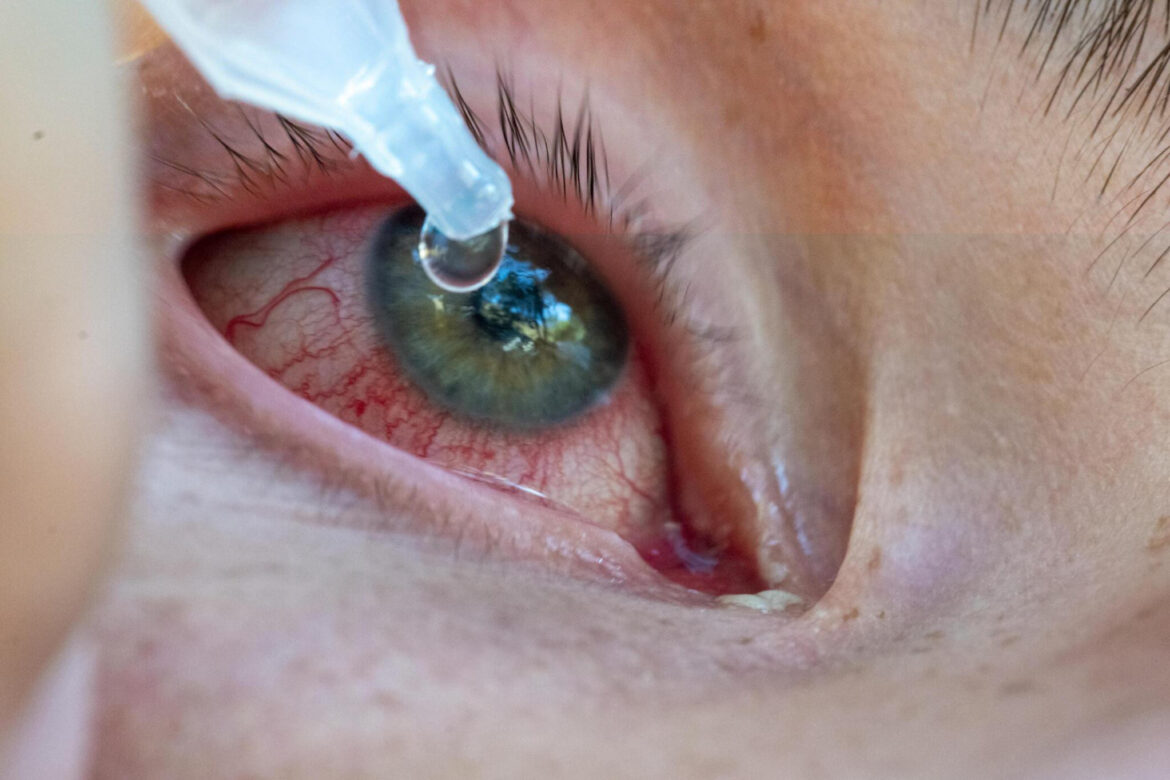Pink eye, also known as conjunctivitis, is a common eye condition that is often misdiagnosed. The symptoms of pink eye, such as redness, itching, and discharge, can be easily mistaken for other eye conditions. It is important to understand the common misdiagnoses for pink eye to ensure proper diagnosis and treatment.
Many conditions can be mistaken for pink eye due to their similar symptoms. These conditions include stye, blepharitis, keratitis, iritis or uveitis, glaucoma, allergies, dry eye, episcleritis, corneal abrasion or other injury, and chalazion. Each of these conditions presents with redness, irritation, and in some cases discharge, making it challenging to differentiate them from pink eye. However, there are subtle differences in the symptoms and characteristics of these conditions that can help in making an accurate diagnosis.
If you are experiencing symptoms of pink eye that do not improve after a few days or have symptoms of an eye infection, it is important to seek medical attention. Prompt medical attention can help determine the underlying cause of your symptoms and provide appropriate treatment. Additionally, if you have experienced an eye injury or if your symptoms may be related to a chronic medical condition, it is advisable to consult a doctor.
The treatment and management of pink eye and the conditions that mimic its symptoms vary depending on the underlying cause. Pink eye is typically treated with cool compresses, artificial tears, and sometimes antibiotic eye drops for bacterial conjunctivitis. Other conditions may require antibiotics, warm compresses, steroid eye drops, oral medications, or even surgery. It is essential to consult a healthcare professional for an accurate diagnosis and appropriate treatment.
Proper diagnosis is crucial to ensure the correct treatment of pink eye and its lookalike conditions. Seeking medical attention, understanding the symptoms and characteristics of each condition, and following prescribed treatments can help manage these conditions effectively. Practicing good hygiene, such as frequent handwashing and avoiding sharing items that touch the eyes, can also help prevent the spread of pink eye and other eye infections.
Key Takeaways:
- Pink eye is often misdiagnosed due to its similar symptoms to other eye conditions.
- Conditions confused with pink eye include stye, blepharitis, keratitis, iritis or uveitis, glaucoma, allergies, dry eye, episcleritis, corneal abrasion or other injury, and chalazion.
- Seek medical attention if pink eye symptoms persist, have symptoms of an eye infection, or if an eye injury is present.
- Treatment for pink eye and its lookalike conditions depend on the underlying cause and may include cool compresses, artificial tears, antibiotics, warm compresses, steroid eye drops, oral medications, or surgery.
- Practice good hygiene and preventive measures to reduce the risk of pink eye and other eye infections.
Conditions Confused with Pink Eye
Several eye conditions can be mistaken for pink eye due to the similarity of their symptoms. These conditions include stye, blepharitis, keratitis, iritis or uveitis, glaucoma, allergies, dry eye, episcleritis, corneal abrasion or other injury, and chalazion. Each of these conditions presents with redness, irritation, and in some cases discharge, making it difficult to differentiate them from pink eye. However, there are subtle differences in the symptoms and characteristics of these conditions that can help in making an accurate diagnosis.
When to Seek Medical Attention
If you experience symptoms of pink eye that do not improve after a few days or if you have symptoms of an eye infection, it is important to seek medical attention. Prompt medical care can help determine the underlying cause of your symptoms and provide appropriate treatment.
If you have experienced an eye injury or if your symptoms may be related to a chronic medical condition, such as an autoimmune disease, it is advisable to consult a doctor. They can evaluate your condition and recommend the necessary steps for diagnosis and treatment.
Remember, early intervention can help prevent complications and promote a faster recovery. If you are unsure whether to contact a doctor, it is always better to err on the side of caution and seek professional medical advice.
Here are some situations when it is crucial to contact a doctor:
- Symptoms of pink eye persist for more than a few days
- Severe eye pain or discomfort
- Increased redness, swelling, or irritation of the eyes
- Presence of pus or discharge from the eyes
- Experiencing an eye injury or trauma
- Simultaneous symptoms of pink eye with a chronic medical condition
By seeking medical attention in a timely manner, you can receive the appropriate diagnosis and treatment for your condition, ensuring a quicker recovery and minimizing the risk of complications.
Treatment and Management of Pink Eye and Confusing Conditions
The treatment and management of pink eye and the conditions that mimic its symptoms vary depending on the underlying cause. It is important to consult a healthcare professional for accurate diagnosis and appropriate treatment for these conditions. The following table provides an overview of the treatment options for pink eye and some of the conditions that can be mistaken for it:
| Condition | Treatment |
|---|---|
| Pink Eye (Conjunctivitis) |
|
| Stye |
|
| Blepharitis |
|
| Keratitis |
|
| Iritis and Uveitis |
|
| Glaucoma |
|
| Allergies |
|
| Dry Eye |
|
| Episcleritis |
|
| Corneal Abrasion or Other Injuries |
|
| Chalazion |
|
| Scleritis |
|
Each condition requires an individualized approach, and treatment may involve a combination of measures tailored to the specific diagnosis. It is important to follow the healthcare professional’s guidance and take prescribed medications as directed.
Importance of Proper Diagnosis and Prevention
Proper diagnosis is crucial for effective treatment of pink eye and its lookalike conditions. While pink eye is typically a mild and self-resolving condition, other eye conditions that mimic its symptoms can have more serious implications if left untreated. Seeking medical attention and following the prescribed treatments and management strategies are essential to alleviate symptoms and prevent complications. Additionally, practicing good hygiene can help prevent the spread of pink eye and other eye infections.
Takeaways:
- Proper diagnosis is crucial for effective treatment of pink eye and similar conditions.
- Seek medical attention for accurate diagnosis and appropriate treatment.
- Follow prescribed treatments and management strategies to alleviate symptoms.
- Practicing good hygiene, such as frequent handwashing, helps prevent the spread of pink eye and other eye infections.
By understanding the importance of proper diagnosis and prevention, individuals can take proactive steps to protect their eye health and minimize the impact of pink eye and its lookalike conditions.
Conclusion
In conclusion, redness, itching, and discharge are common symptoms that can be associated with pink eye, but it is essential to consider other eye conditions that can mimic these symptoms. Proper diagnosis is crucial to ensure the right treatment and prevent further complications.
If you suspect that you have pink eye or a similar condition, seeking medical attention is recommended. A healthcare professional can help differentiate between these conditions based on their specific symptoms and characteristics.
Once you have received a diagnosis, it is important to follow the prescribed treatments and management strategies. This may include the use of medication, eye drops, compresses, or other interventions, depending on the underlying condition. Compliance with the recommended treatment plan will help manage these conditions effectively.
Remember, practicing good hygiene, such as frequent handwashing and avoiding sharing items that touch the eyes, can also help prevent the spread of pink eye and other eye infections. By taking these preventive measures and seeking appropriate medical care, you can protect your eye health and ensure a quick recovery from pink eye or its lookalike conditions.
FAQ
What are some conditions commonly misdiagnosed as pink eye?
Some conditions that are commonly mistaken for pink eye include stye, blepharitis, keratitis, iritis or uveitis, glaucoma, allergies, dry eye, episcleritis, corneal abrasion or other injury, and chalazion.
How can I differentiate between pink eye and these lookalike conditions?
While these conditions may have similar symptoms, there are subtle differences that can help in making an accurate diagnosis. Seeking medical attention, understanding the symptoms and characteristics of each condition, and following prescribed treatments can aid in differentiation.
When should I seek medical attention for pink eye or its lookalike conditions?
It is important to seek medical attention if your symptoms of pink eye do not improve after a few days or if you have symptoms of an eye infection. Additionally, if you have experienced an eye injury or if your symptoms may be related to a chronic medical condition, it is advisable to consult a doctor.
How are pink eye and its lookalike conditions treated?
The treatment and management of pink eye and the lookalike conditions vary depending on the underlying cause. Treatment options may include cool compresses, artificial tears, antibiotic eye drops, warm compresses, antibiotics, steroid eye drops, oral medications, and surgical interventions.
Why is proper diagnosis important for pink eye and its lookalike conditions?
Proper diagnosis is crucial to ensure the correct treatment of pink eye and its lookalike conditions. While pink eye is usually a mild and self-resolving condition, other conditions can have serious implications if left untreated. Seeking medical attention and following the prescribed treatments can help alleviate symptoms and prevent complications.
How can I prevent pink eye and other eye infections?
Practicing good hygiene, such as frequent handwashing and avoiding sharing items that touch the eyes, can help prevent the spread of pink eye and other eye infections. It is also important to maintain a healthy lifestyle and seek prompt medical attention for any eye-related concerns.







